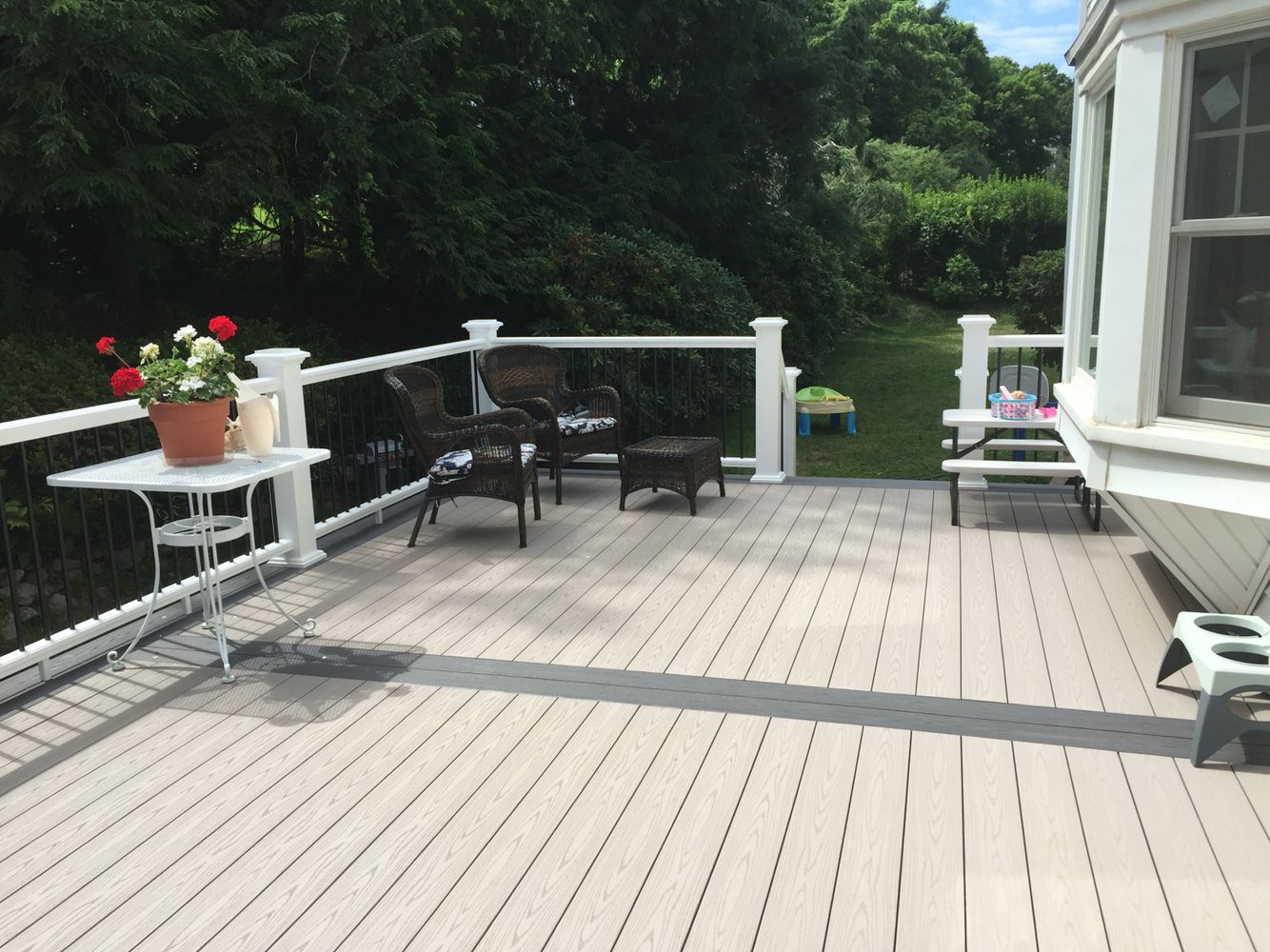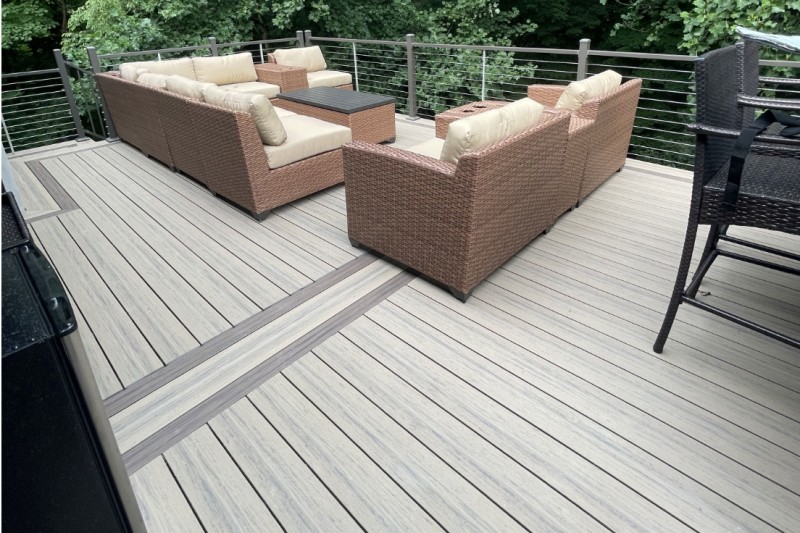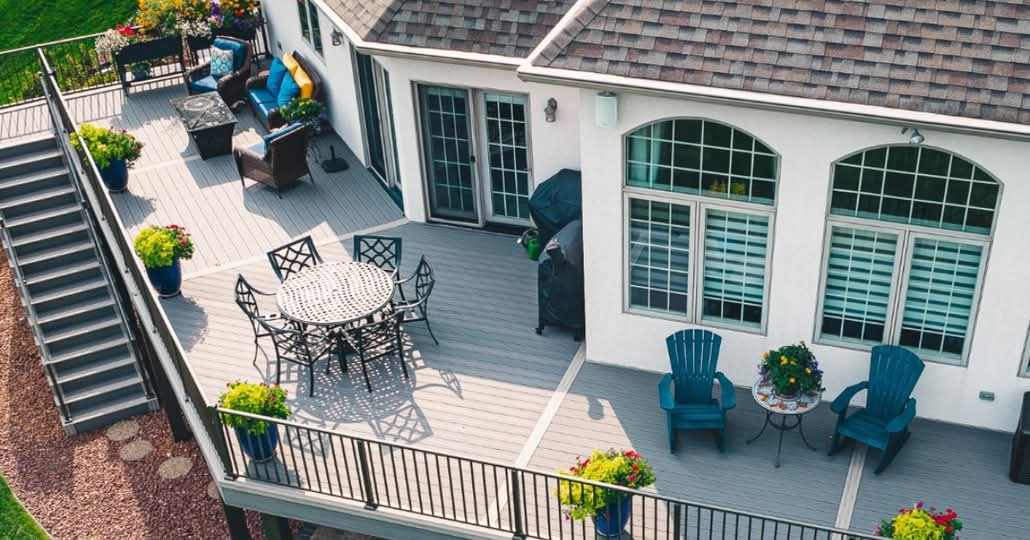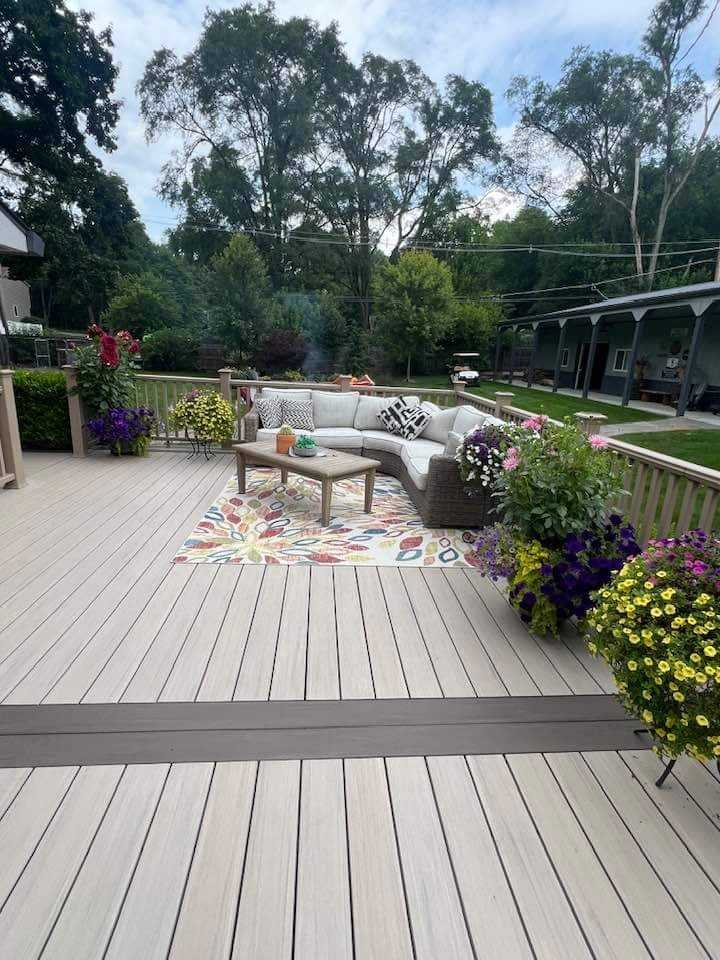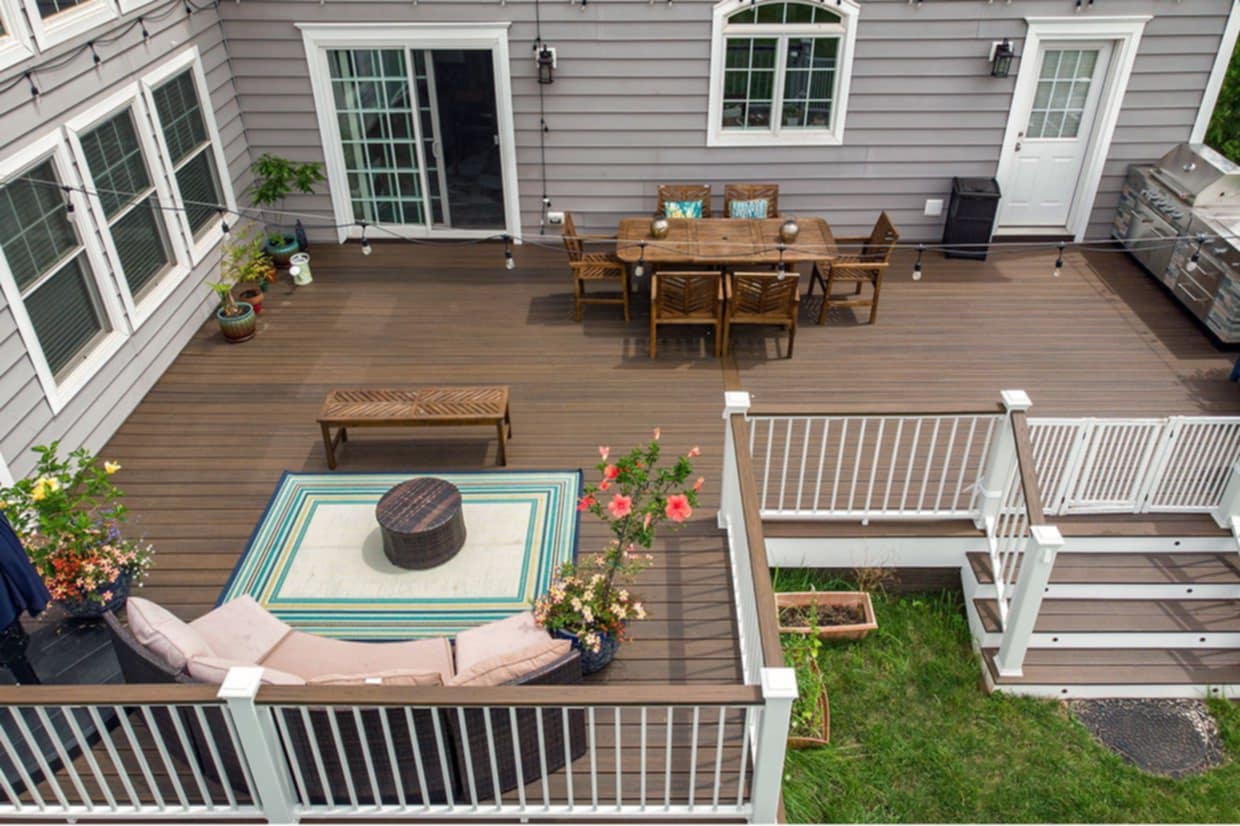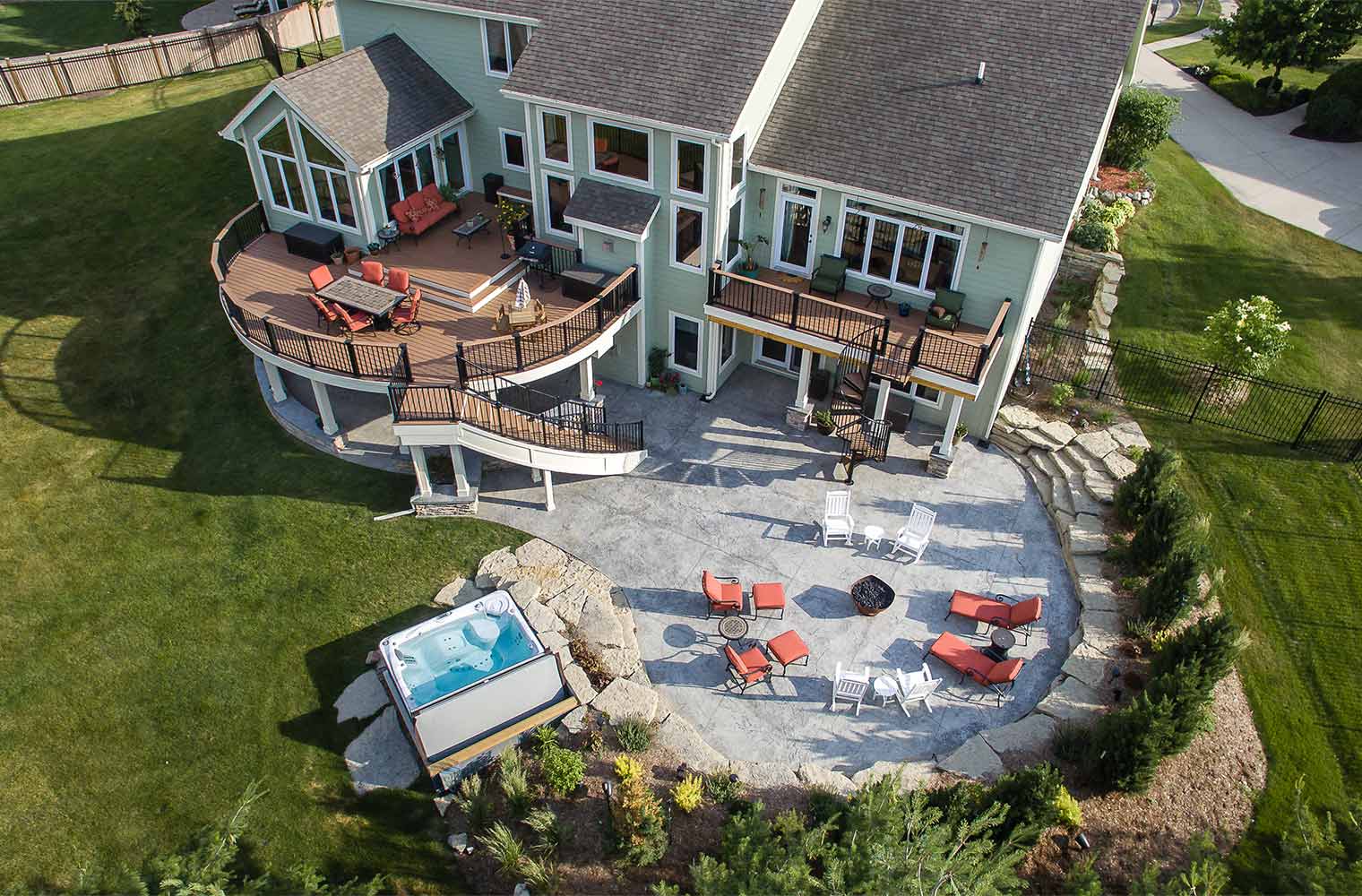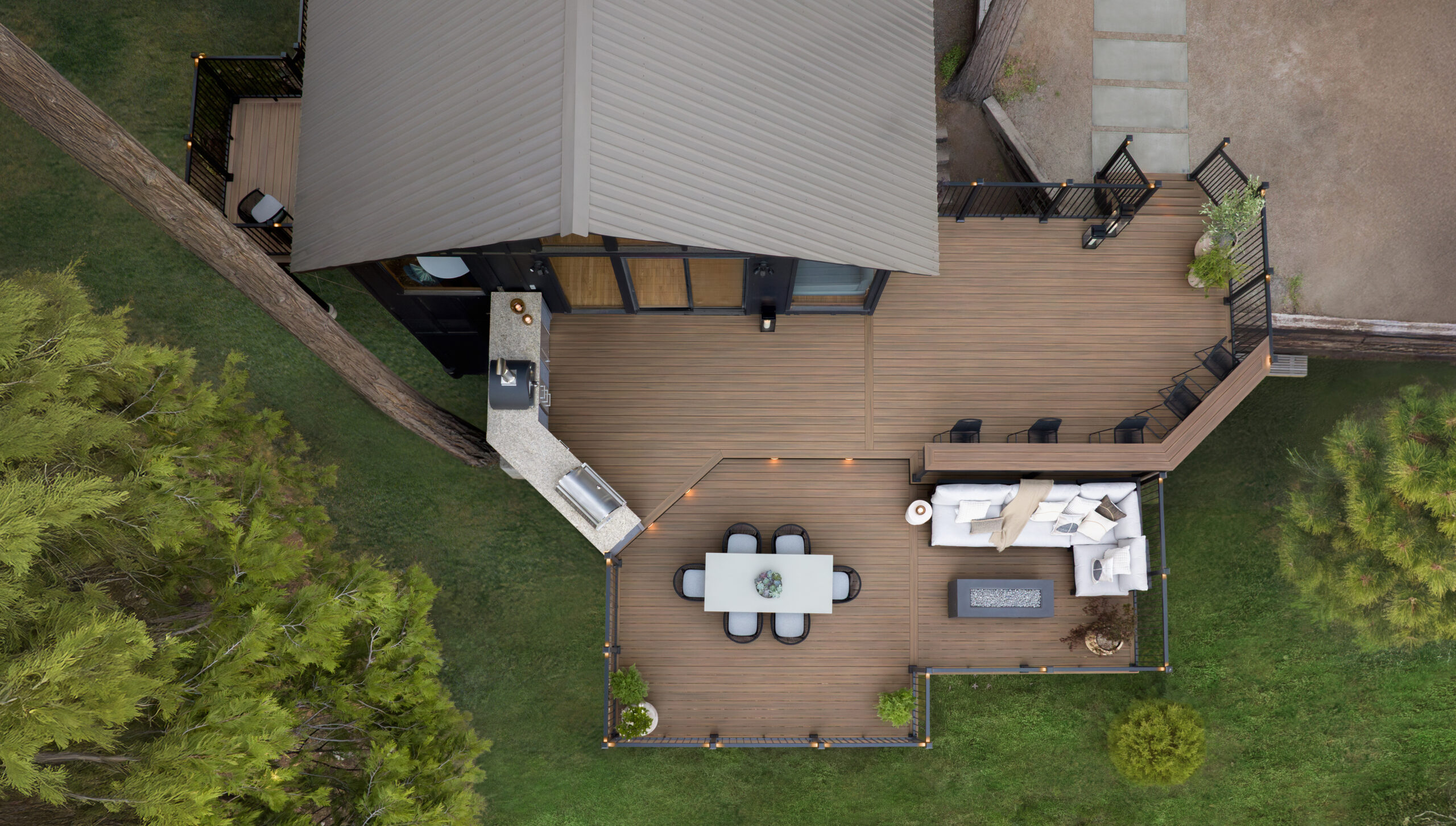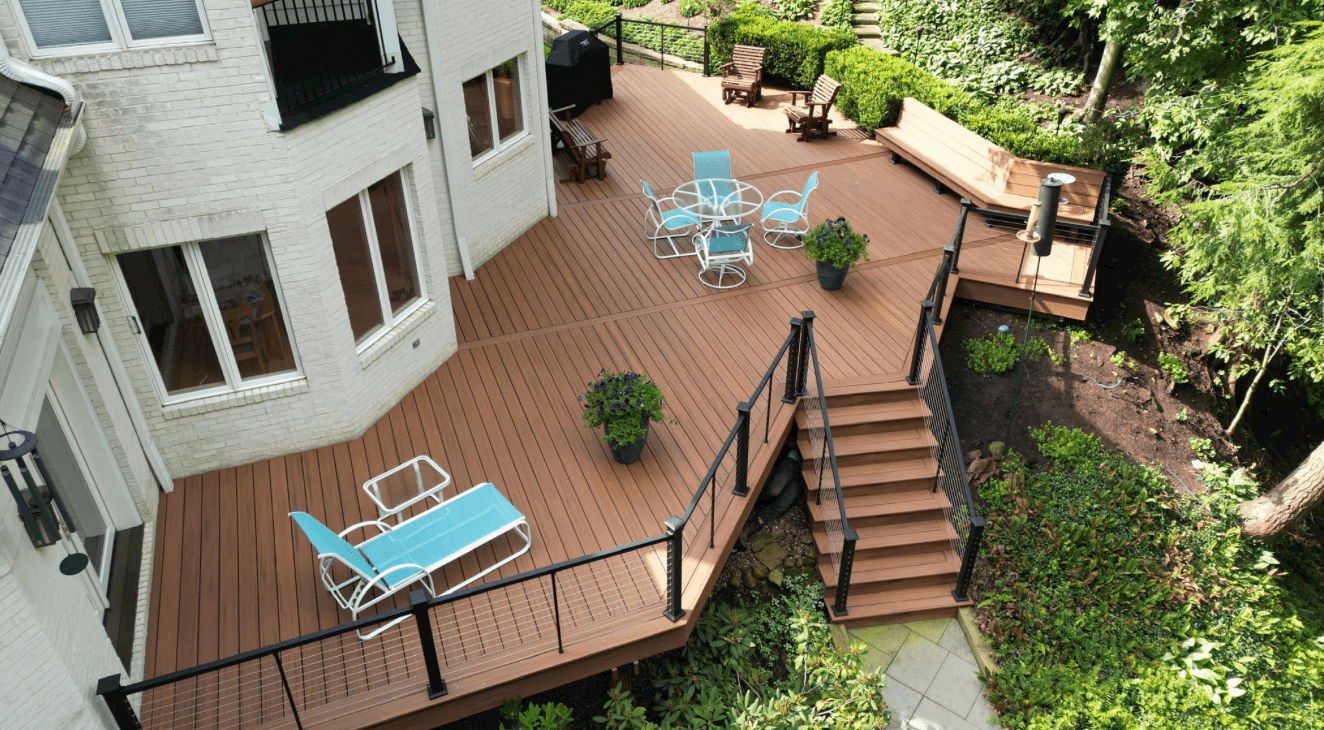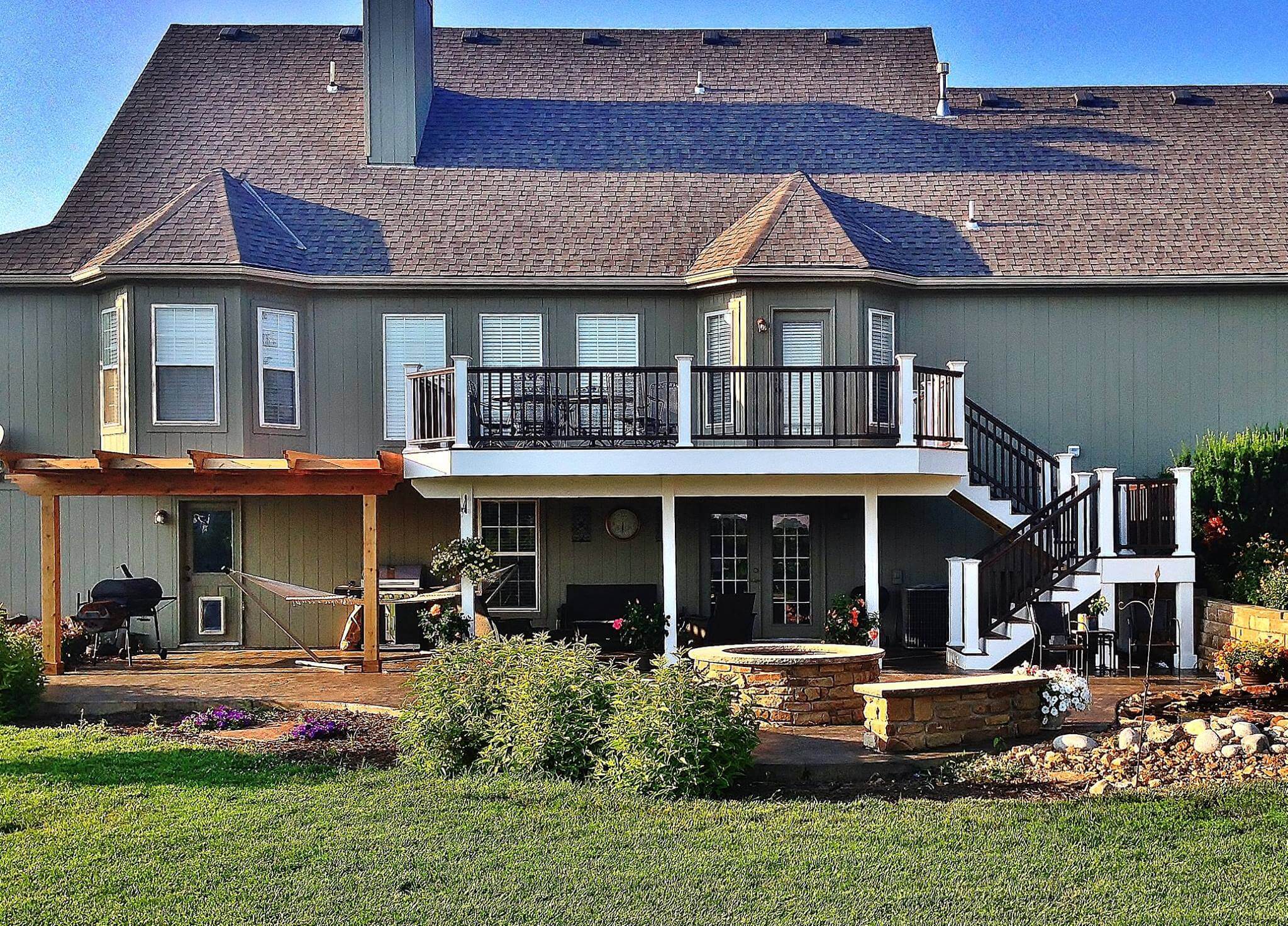Building a deck is an exciting project that can transform your outdoor space into a beautiful and functional extension of your home. Whether you envision a peaceful retreat to enjoy the sunset or a lively entertainment area for gatherings with family and friends, careful planning is crucial to ensure your deck meets your needs and enhances your lifestyle.
From design considerations to material choices, there are several key factors to keep in mind when embarking on this endeavor. Here, we take a closer look at 8 things to consider when designing your new dream deck.
1) What’s your budget?
A custom deck is a significant investment. But if done correctly, it’s something that will bring endless enjoyment and last for decades to come.
When planning your deck, it’s important to know your budget so you can choose your desired features and materials accordingly. Fortunately, there are many options to suit all different budgets.
To stay within your budget and to make informed decisions, research the various materials, finishes and design elements and consult with specialist decking contractors.
2) How much time will you be spending outdoors?
To maximize your enjoyment of your deck, consider how much time you plan to spend outdoors and what activities you’ll engage in.
For those who enjoy relaxing, consider a comfortable seating area with cozy furniture and shade options. Or, if outdoor dining is a priority, plan for a designated dining space with ample seating.
For entertaining and gardening enthusiasts, in your plans you can include features such as built-in planters and versatile spaces to accommodate various social gatherings.
Determining your preferred outdoor activities will help you create a deck that perfectly suits your lifestyle.
3) What size will your deck be?
When planning your deck’s size, take into consideration the available yard space and your desired functionalities. The key is trying to maintain a balance between accommodating seating, dining and other activities while preserving the existing charm of your yard.
One way to achieve this is by using the ‘rule of thirds’. This means designing your deck to occupy no more than a third of your yard, ensuring ample space for desired functions without overwhelming the landscape.
4) What materials, colors and other options are you considering?
The material and color of your deck significantly contribute to the overall aesthetics of your outdoor space. The deck should complement the architectural style of your home and blend seamlessly with the surroundings.
That said, there are many different deck materials to choose from, each with their own price point. Pressure-treated lumber is the least expensive, while composites and exotic hardwoods can cost significantly more.
These different materials have varying levels of durability and require different maintenance routines. For example, natural wood decking requires regular staining, sealing and upkeep to prevent weathering and deterioration. On the other hand, composite decking materials are known for their durability and low maintenance requirements.
Overall, high-quality, durable materials will pay off in the long run with reduced maintenance costs and a longer overall lifespan, adding value to your property in the process.
5) How will you preserve the yard space and views?
One common concern when designing a deck is how to preserve your yard space while also maintaining unobstructed views. This is where strategic deck design comes into play. One way to achieve this is by designing a multi-level deck. This not only creates visual interest but also allows you to create separate areas for specific activities.
Instead of adding bulky furniture that takes up space, integrate built-in seating options such as benches or ledges along the edges of the deck. This not only saves space but also enhances the overall design.
Another way to maintain your views is by considering your choice of railings. While traditional railings can obscure views when sitting down, clear glass railings or cable railings can provide the needed safety without blocking the view.
Finally, preserving yard space can also be achieved by working with the natural landscape. To create a seamless transition between the deck and the yard, consider natural materials like wood or composite decking that blend well with the environment. Another way is to incorporate landscaping elements around the deck’s perimeter. Use plants, shrubs or grasses to soften the edges and create a smooth transition between the deck and the yard.
Incorporating these creative strategies into your deck design can help maintain your yard space and views while still allowing you to enjoy the benefits of an outdoor living space.
6) How will sun exposure affect the enjoyment of your deck?
Sun exposure dramatically impacts the enjoyment of any deck. To ensure optimal comfort, consider the direction of sunlight throughout the day and plan your deck’s orientation and shading accordingly.
Install features like pergolas, shade sails or retractable awnings to control sun exposure and ensure that your deck remains a pleasant space throughout the day.
7) Where are the important access points?
There are two main ways to access your deck: either via a set of stairs or from a direct connection to the home.
Stairs allow people to enter and exit the deck area easily, ensuring a smooth transition between the deck and the surrounding yard or outdoor space.
Well-designed and visually appealing stairs can also enhance the overall look and aesthetics of your deck. They serve as a focal point and can add architectural interest, complementing the style and design of your outdoor living space.
That said, to effectively integrate your deck with your home, you should also identify key access points between your indoor living spaces and the deck. For instance, connecting your deck to the kitchen or living room allows for easy access during social events.
To maintain a visually pleasing connection between indoors and outdoors, consider using complementary colors and materials for both spaces. Thoughtful design and attention to these access points will enhance the overall aesthetics and functionality of your deck.
8) What do you want as your deck’s main focal point?
To create an eye-catching deck, consider incorporating a focal point such as the stairs, a fire pit, a covered structure or outdoor kitchen. This not only enhances the visual appeal but also adds functionality to your deck design.
For example, an outdoor kitchen is a convenient way to cook while hosting outdoor gatherings. Additionally, a beautifully designed fire pit can serve as an inviting gathering spot and provide warmth on chilly evenings.
Decked Out Builders Has Every Angle Covered
At Decked Out Builders, we know decks inside out. We understand all of the considerations that need to be made when designing your dream space.
With thoughtful planning and creativity, together, we can design a deck that enhances you and your family’s enjoyment of the outdoors for years to come.
Get in touch now to discuss your options and see what possibilities there are for your backyard space.


